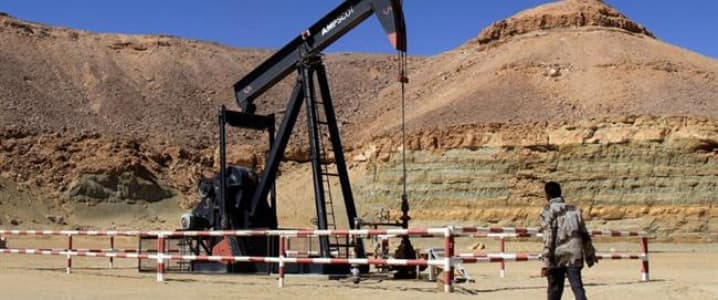Despite frequent oil field outages and now an open conflict between the UN-recognized government and the eastern-affiliated LNA, Libya’s oil production could double to 2 million bpd by 2023, IHS Markit analyst Fotios Katsoulas wrote in a recent report.
At the moment, the North African country’s production is hovering around the 1-million-bpd mark, which is in itself an achievement given the difficult security situation and the constant risk of yet another field outage or pipeline blockade as we have seen in the past three years since the Libyan National Army took control of the Oil Crescent export infrastructure, driving out the Petroleum Facilities Guard. Since then, the two factions have clashed over the oil ports several times.
In addition, there have been pipeline blockades by disgruntled locals and other military factions, which have too led to field outages, the longest of which lasted three months earlier this year and affected a third of production, pumped at Libya’s largest field, Sharara.
Despite all this and continued concern about the security situation in the restive country, IHS Markit’s Katsoulas noted that exports from Libya have actually increased during the second quarter of the year, reaching an average of 960,000 bpd between April and mid-June. This is 40 percent higher than the average export rate for the first quarter of the year when Sharara was offline.
This sounds surprising, to say the least, especially in light of the other main concern on oil markets: that demand is weakening and will continue to weaken through the rest of the year and beyond. Libya does not seem concerned about this. What it is concerned with, at least according to statements from the head of its National Oil Corporation, is the danger of a production outage.
In May, PVM Oil Associates analyst Stephen Brennock said, “The security situation is deteriorating and with Libya lurching from one crisis to another, conditions are increasingly ripe for a supply shock.” Related: Oil Holds Steady Amid Small Rig Count Decline
Another analyst, from Standard Chartered, said investors were “clearly ignoring” the warnings of NOC’s Mustafa Sanalla, who said in late May, that “Protracted hostilities continue to hamper NOC operations and our ability to serve the Libyan people. Key infrastructure is being damaged and security eroded - allowing criminal elements to prosper.”
More recently, NOC warned that there has been increased military presence—from the LNA—at one of the Oil Crescent’s terminals, Ras Lanuf, and this could increase the risk of the facility becoming a target of an attack.
“The presence of forces inside the terminal represents an unacceptable risk to employees. This renders the terminal a potential military target, thereby risking the destruction of Libyan oil infrastructure - and the resulting economic crisis that would follow,” Sanalla said.
Now, while none of this is conducive to increased investment in oil and gas, Libya, according to Katsoulas, is already in talks with foreign companies about such investments to the tune of no less than US$60 billion. Granted, cash will only start flowing when investors are at least reasonably certain the pattern of outages changes, but the fact there are negotiations being held is reassuring for the future of Libya’s oil industry despite the still considerable risks. This, in turn, means there is optimism in the industry about future demand despite the short-term pessimism and longer-term skepticism as environmentalists and politicians begin targeting Big Oil’s main future source of revenue: plastics.
By Irina Slav for Oilprice.com
More Top Reads From Oilprice.com:
- War Worries Send Oil Prices Soaring
- The Oil Company Investors Fear Most
- How To Buy Gold For $3 An Ounce

















